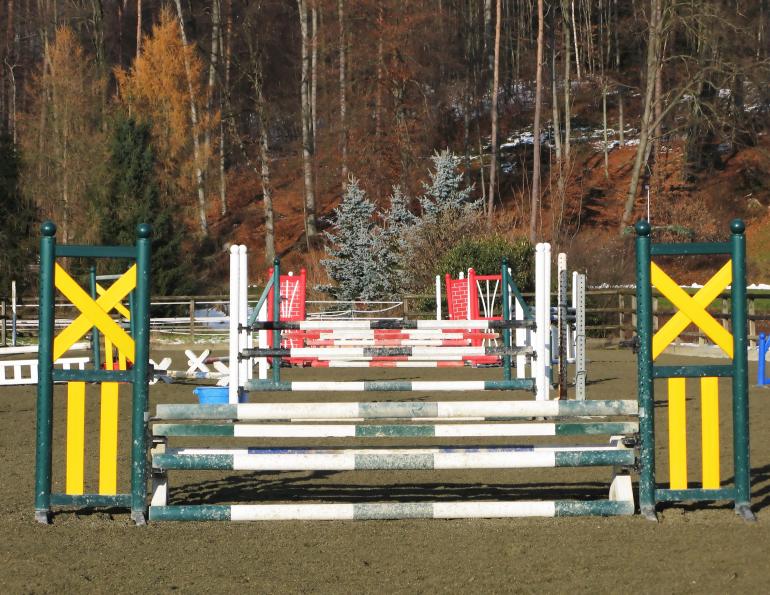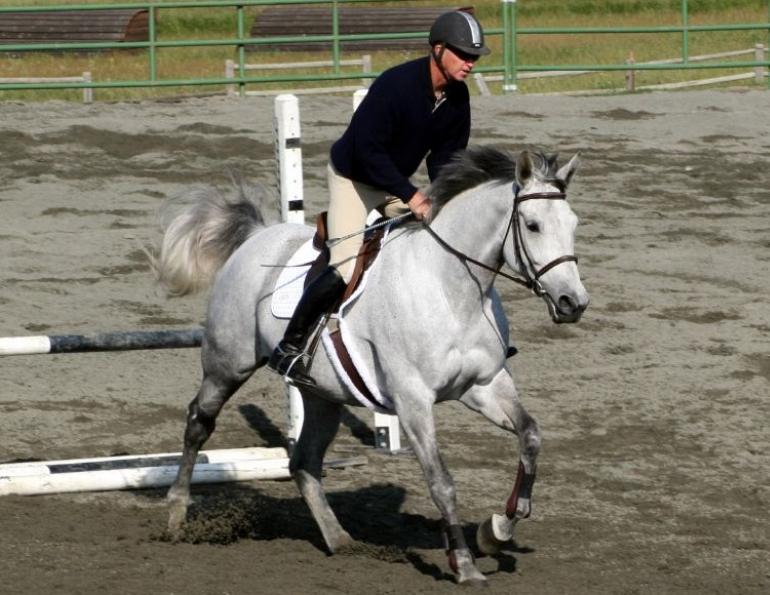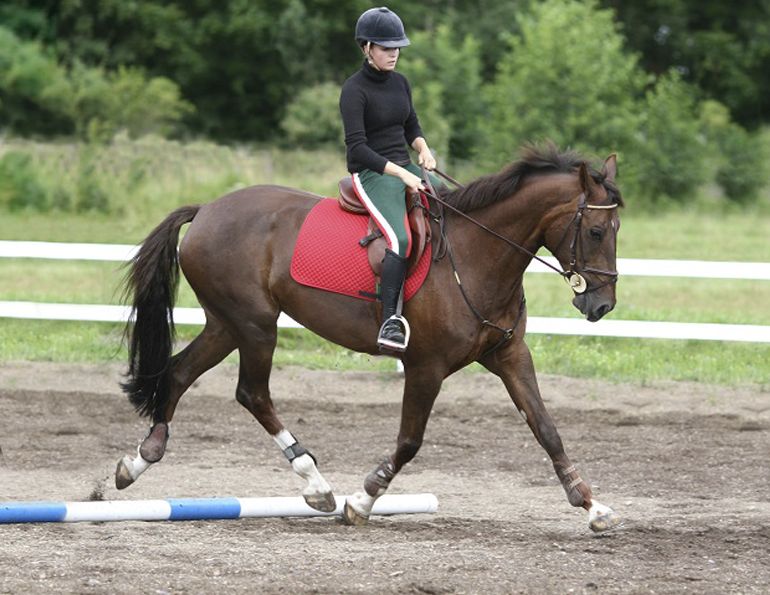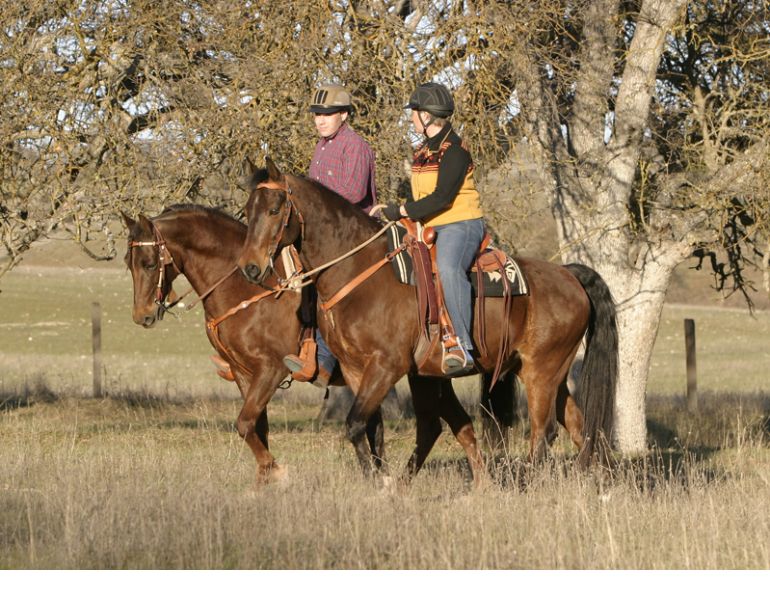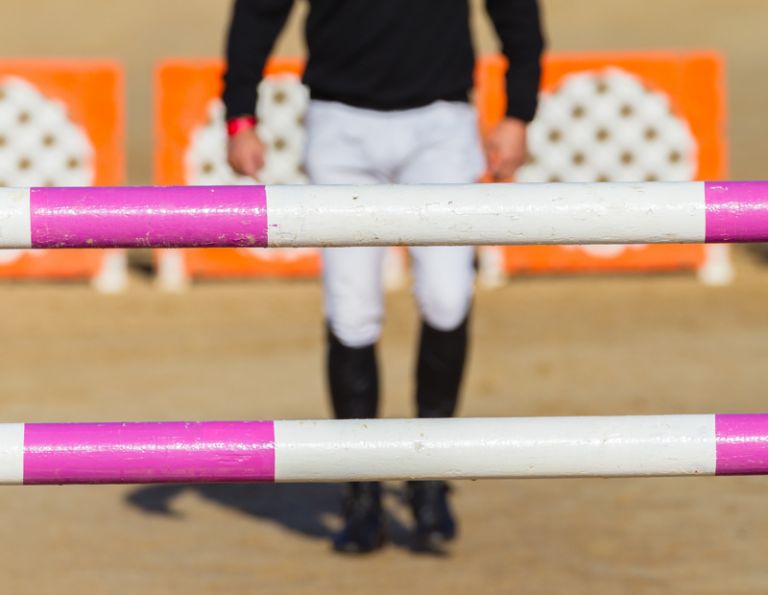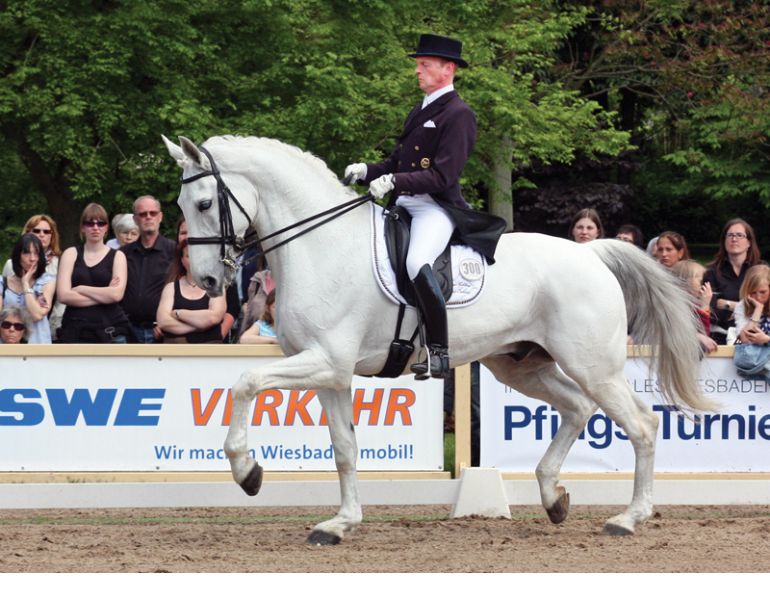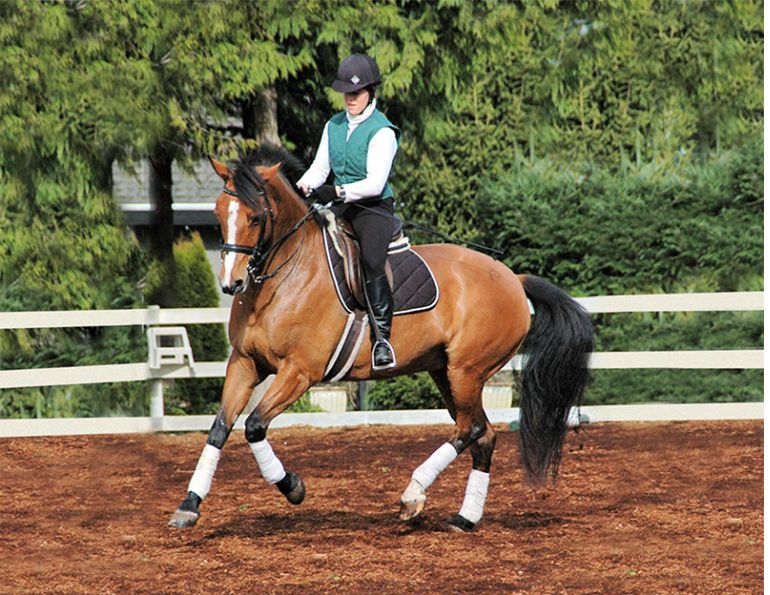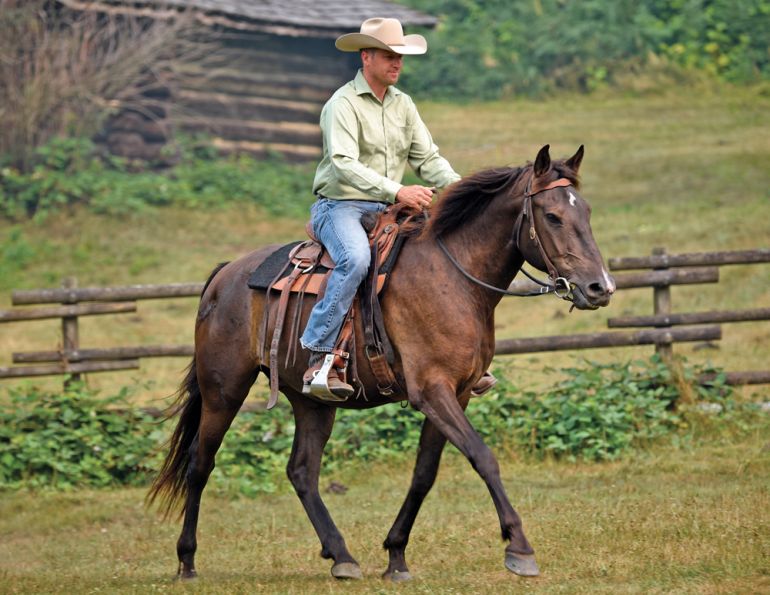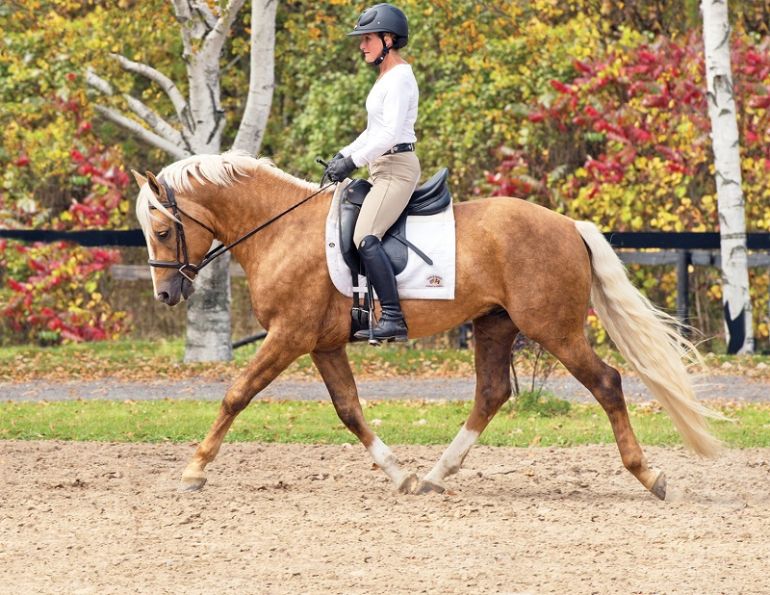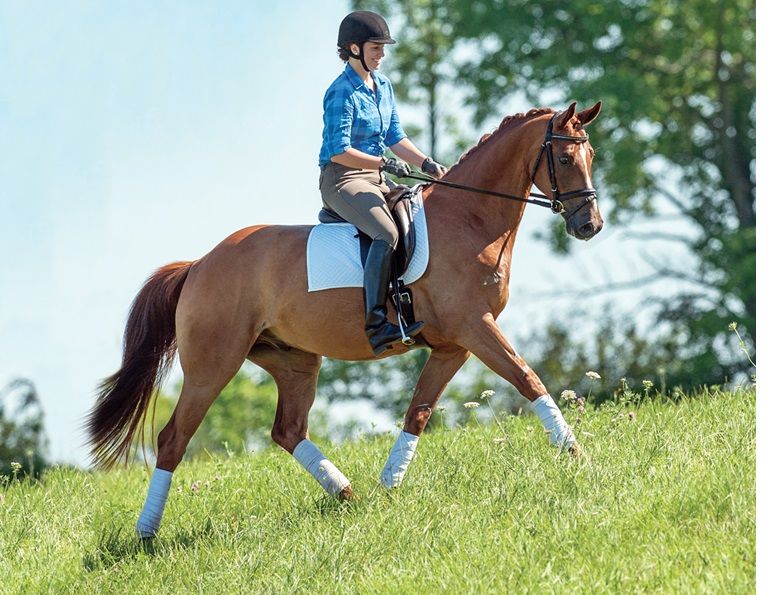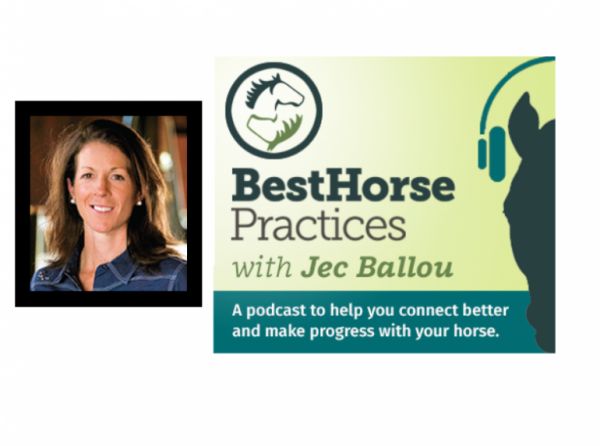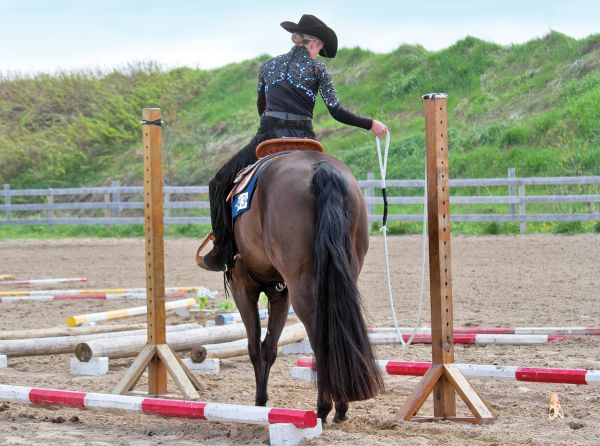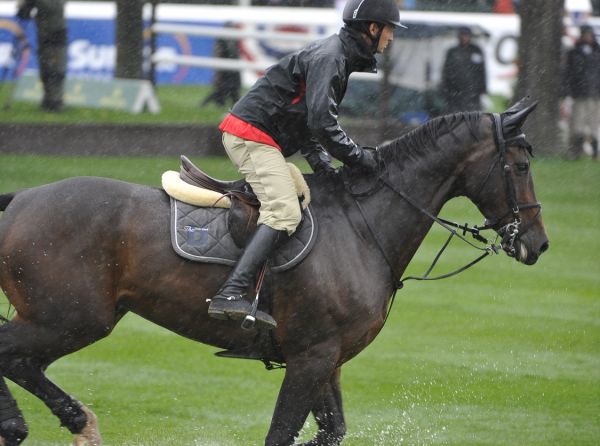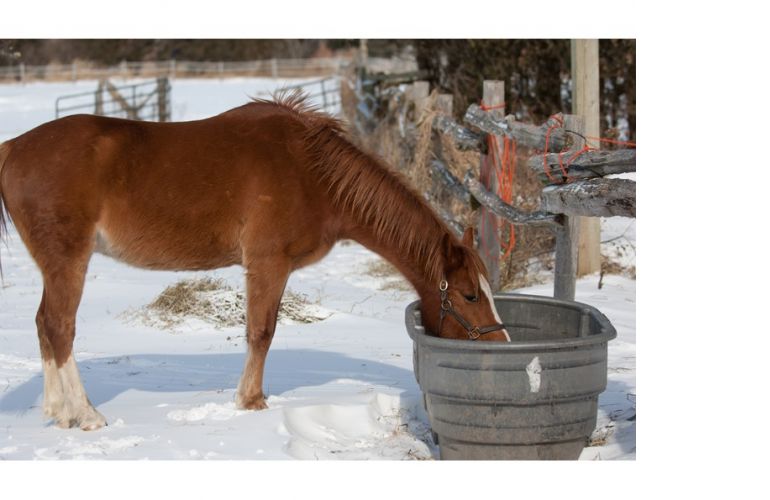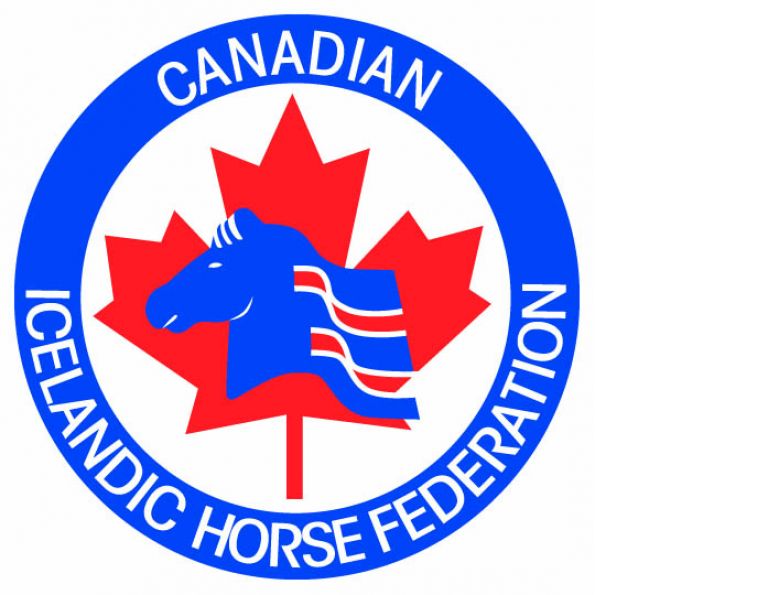With Brian Morton
By Jess Hallas-Kilcoyne
According to successful show jumping rider and trainer Brian Morton, collection can be defined as “the shortening of the horse’s outline and stride with increased impulsion and engagement from the hind end.” And, as he hastens to point out, “If you are not able to shorten your horse’s stride, you will never be able to get a horse to fit a stride into a line that is set short. And, if you lose the impulsion when you shorten the stride, you will never be able to produce a powerful round jumping effort off a short distance.”
First, think about the quality of your horse’s canter on the flat. Brian recommends shortening the horse's stride until you can comfortably canter a 10 metre circle. If you are able to maintain a three-beat rhythm easily, you’re beginning to work toward collection.
The feeling of collection is one of adjustability. “When you’re working in a collected gait, the horse is not stuck in that gait,” says Brian. “The horse is still in front of your leg, still engaged. There’s still a lot of contained energy in the movement, then it’s easy to release that energy and send it out on a longer stride again.”
While a good start, it’s not enough that the jumping horse maintain collection on the flat; he must also have the ability to hold that collection over a jump, or a course of jumps. To encourage your horse to maintain collection throughout the arc of his jump, Brian recommends the following two gymnastic jumping exercises.
Gymnastic #1: The Compression Chamber

Halfway down one of the long sides of the arena, set a vertical (2’9” to 3’) with a ground pole placed nine feet away on either side, as illustrated in the diagram to the left.
Establish forward impulsion in a nice working trot rising and then, well in advance of the jump, drop into a light sitting trot, focusing on maintaining the impulsion and rhythm all the way to the first pole. Over the pole, close your leg just a bit and maintain a light feel of the mouth until the horse has left the ground. Allow the second pole to encourage your horse to land and canter away in uphill balance.
“By using poles to regulate his take-off and landing, you are ensuring that the highest part of the horse’s arc is centered over the jump,” Brian explains. “This asks the horse to push hard off the ground, but also to contain the power of his jump and send that power in an upward direction.”
To canter into the exercise, start out with a good, forward canter, making sure the horse is in front of your leg. Well in advance of the jump (10 strides or more), drop into a full seat and collect the canter, but remember to maintain impulsion and a clear, three-beat rhythm. Look to the first pole and if you find the distance smoothly and comfortably, it will set up the distance to the fence for you. As your horse’s front feet begin to step over the pole, raise your eyes to focus on the top rail of the vertical, and let the canter rhythm carry you over the fence.
Related: Single Pole Exercises
While The Compression Chamber is more accessible to a green horse or rider, the second exercise is designed for a horse that’s comfortably jumping at least 3’6”, and a rider who’s starting to develop the capability to jump 3’9”. “This is a very challenging gymnastic for horse and rider, and should be introduced one part at a time,” Brian cautions. “You will need your horse to be proficient at the bounces by themselves before you put them into the context of this gymnastic. Once you have built the gymnastic one part at a time, and you and your horse are comfortable and successful with that, you are ready to try it as a whole.”
Gymnastic #2: The Winkler Gymnastic
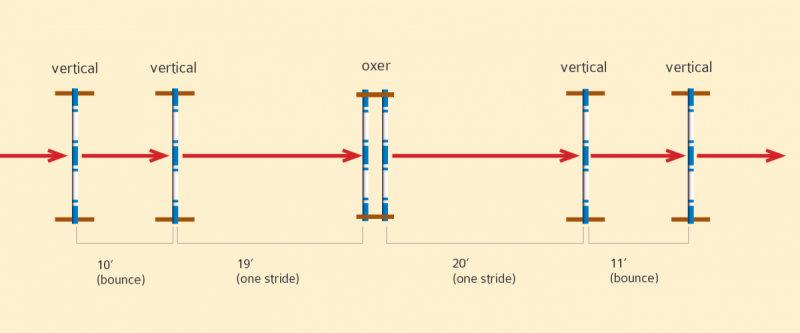
Set the combined gymnastic on the centreline (assuming your arena is wide enough to allow a good approach on either rein) according to the specifications outlined in the diagram to the left.
Keep the jumps relatively small at first – around 2’ for the verticals and 2’9” to 3’ for the oxer. You can raise them as you become more proficient, but, Brian cautions, “If you get to the point where the bounces are three feet three inches and your oxer is about four feet square, your horse would be working very, very hard. That would be the biggest you’d want to do the exercise.”
Brian recommends that you focus your approach in three stages:
- Produce a very active and collected canter. The distances (based on an average size horse with an average stride) require that the exercise be approached at a very collected canter.
- Look at the quality of your track. Ride deep into the corner, bending the horse around your inside leg, and focus on riding very straight to the gymnastic. Make sure the horse has at least three straight strides to be able to see the gymnastic he is about to jump.
- Select a distance for the first vertical. The distance that interrupts the rhythm the least is the best choice. If you are faced with the option of moving up or waiting, choose the more conservative waiting distance. This reinforces the message that you want the horse to remain collected throughout the exercise.
As you jump into the gymnastic, Brian recommends that you “focus on controlling your upper body so that you’re not jumping ahead of your horse, and give him time to slow his jump down and jump up to you. Choose a short crest or automatic release. A light connection to the horse’s mouth throughout the gymnastic will help him maintain his balance and collection. Use your voice if the horse is getting quick, or if you see that you’re getting deep to the next part of the gymnastic.”
Related: 9 Best Cavalletti Exercises
About Brian Morton
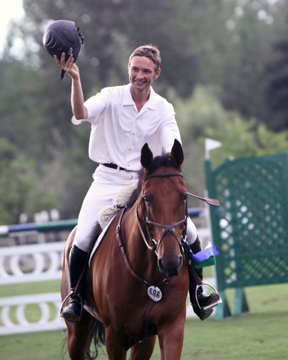
Brian Morton has a lengthy list of wins in the international ring to his name. He is currently a resident rider at Spruce Meadows in Calgary, Alberta and is head of the Spruce Meadows Horse Program.
Main Photo: Shutterstock/Alexander Chaikin



